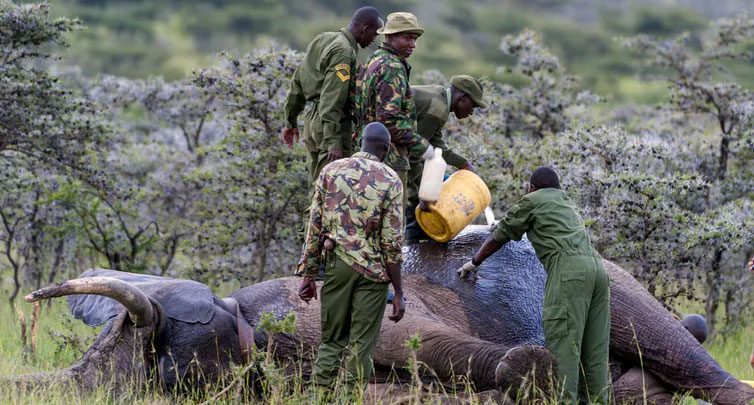The Journal of Science has reported that elephants in Mozambique are evolving away from growing their usual tusks. In 1972, the population of elephants in Mozambique suffered a considerable decline from 2,542 elephants to just 242 elephants by the year 2000. The Civil War in Mozambique from 1977 to 1992 killed nearly 90 percent of the elephant population due to both armies targeting ivory, the valuable compound found in elephant tusks.
Upon analyzing data, The University of Idaho concluded that natural selection is favoring tuskless female elephants. Due to the lack of tusks within female African elephants, poachers find the animals less attractive, allowing them to reproduce and pass on the rare genetic trait. Originally a rare genetic trait, tuskless African female elephants are becoming more common due to years of illegal poaching. After careful examination, researchers discovered that tuskless elephants are five times more likely to survive over 28 years than tusked elephants.
Although tuskless elephants are more likely to survive, elephants require tusks for protection and survival within their ecosystems. Chris Darimont, a scientist at the University of Victoria in British Columbia, says, “a population-wide increase in tusklessness may have downstream impacts.” Noting, “elsewhere, evolution in species that perform key ecological functions has exerted potent effects.”
As Darimont states, having tusks can be crucial for elephant survival. It is especially so for gathering food and mineral resources, peeling bark off trees to eat, defending themselves, and creating other habitats for different species. Without tusks, elephants are vulnerable to the consequences of changing ecosystems. If elephants remain without tusks and the genetic mutation continues to be passed on, the change in habitats for other species will drastically decrease. Elephant populations are a keystone species, meaning that they are a species “which other species in an ecosystem largely depend on, such that if it were removed the ecosystem would change drastically.”

Rangers tend to elephant injured by poachers Marion Smith – Byers Shutterstock
Researchers, including Chris Darimont, explain that the tuskless population may take up to seven generations to diminish. In the grand scheme of evolution, this decrease is highly accelerated, and there is still much to be known about the phenomenon. Today, about one-third of the female elephant population in Mozambique are tuskless, which used to be a mere 2 percent of the population.
Specialists continue to monitor the fragile elephant population. Governmental oversight to prevent further poaching is essential to secure a future of tusked elephants. What was a benefit to the population during stressful reproductive seasons of the war is now a risk to their overall survival. With proper governmental and scientific guidance, through initiatives and programs, elephant populations could regain their normal genetic inheritances as fast as they diminished.
Like what we have to say? Sign up to subscribe to email alerts and you’ll never miss a post.










